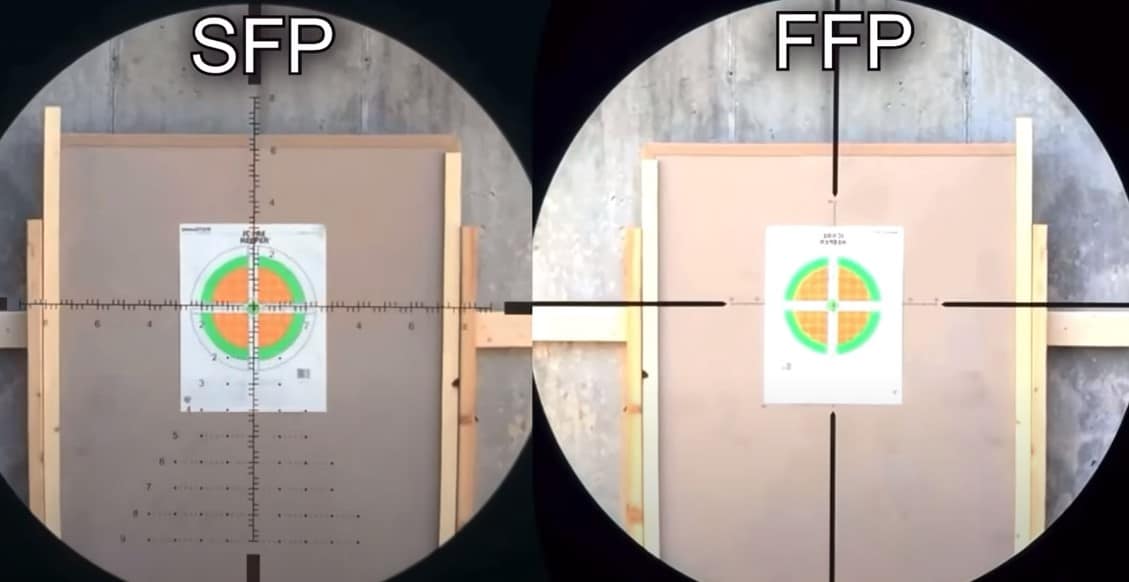How To Calculate MOA at Different Magnification Levels?

Most shooters, even those moderately familiar with a rifle, understand that a certain level of math is necessary for precision shooting. Most shooters will know this math exists but will never actually need it for their hooting.
Those looking to shoot with precision and to put rounds in as small a group as possible or those looking to make accurate shots at long range need to be keenly aware of a variety of different factors.
This includes everything like measuring wind, distance, and even things like humidity and the effects of the earth rotating. All this is involved in making precision-grade shots.
So, What Is MOA?
The first thing you need to understand is MOA, which is an acronym for minutes of angle. A minute of angle is an angular measurement and is 1/60th of a degree.
MOA is so handy because 1 MOA spreads at right around an inch at 100 yards, and the measurement is consistent for every hundred yards.
Since most rifle ranges are spelled out in hundreds, MOA is very handy to understand and know. Truth to be told, 1 MOA is not an exact inch, though, it’s 1.047.
How Magnification Affects MOA?
Most precision shooting and most long-range shooting is done with an optic. Optics also traditionally have magnification, which can affect how you utilize your minute of angle.
Certain scopes will change the value of your MOA as the magnification is amplified. There are different focal planes scopes to operate on:
- The first or front focal plane.
- The second focal plane.
The first focal plane has no effect on your MOA, regardless of magnification. As a result, first focal plane scopes are usually quite expensive and uncommon, although they are growing in popularity.
For example, check the (price) difference between Bushnell AR Optics 1-4×24 front focal plane vs. second focal plane version. With the second focal plane, you’ll be forced to compensate and understand how magnification can change MOA size.
Typically, MOA is correct at the highest magnification setting of the optic. So, an optic with a 10-power magnification has a 1 MOA at one hundred yards when the magnification setting is 10x.
What Is The Purpose Of Measuring Shooting In Minutes?
I was right. This is the next question you need to ask. In looking at a bullet’s movement, you can see that it follows an arc that is not perfect.
The acceleration of the object decreases as it travels due to the increasing force of gravity. As a result, the slope of the arc becomes steeper.
Your shooting accuracy may be slightly off at closer targets, such as those within 200 yards. If you aim farther than, say, 600 yards, you notice that you are hitting lower than the target.
When a bullet hits a target, it drops a certain amount of distance between where it hits and the target. Inches are used to measure it.
Bullets follow a trajectory, which we refer to as their trajectory. Since the bullet drop occurs in an arc, we need to measure it in degrees to cover it effectively. MOA is useful in this context.
Distance And MOA
MOA does not depend on distance. It’s a bit complicated here if you thought there was a connection. MOA is an angular measurement, not a linear measurement. The elevation turret on a rifle is used to adjust a long-range target scope.
How Do We Convert MOA To Linear Measurements?
For 100 yards, 1-minute equals one inch (or 1 MOA). It’s actually 1.047 inches, so one inch here is an approximation. 0.047 inches are not taken into account when shooting and rounded off to one inch. It becomes applicable, however, in a long-distance shooting.
In what sense does the above statement make sense? First, the bullet’s point of impact at 100 yards changes by 1 inch if you make a minute adjustment to the scope you are using. As you go beyond 100 yards, however, the size in inches increases, but it’s still one minute.
Calculating MOA At Other Magnification Levels
Most scope manuals will give you an idea of the scope MOA at one magnification or another. Let’s say we opened up our scope manual, and we see that the reticle is 10 MOA at 18 power.
When you reduce the magnification level to 9, the MOA would change to 5 MOA. So you’ll need to do a simple transition to calculate the MOA in accordance with the magnification.
So, 18 power equals 10 moa, and 9 power equals 5 moa, and that means 4.5 power equals 2.5 MOA. Another method is the shoot and see.
This is the funner, but an obviously more expensive method. However, this is certainly a timely method and requires a lot of ammunition and note-taking.
Calculating Bullet Drop
Something else important is calculating bullet drop on an optic when you do not have a specific bullet drop compensator built into your rifle.
This an easy method to use MOA and a mil-dot system to calculate bullet drop at different ranges and magnifications.
You will need a data book and be apt and patient in taking notes. You’ll have to take notes for every range and every magnification.
This means if you want a complete and total list, you’ll have to make tack marks large enough to see at a good distance. The tac marks should be 3.6 inches apart. At hundred yards, you’ll notice 1 mil falls between the tack marks.
At one hundred yards, 3.4377 MOA equals a literal hair under 3.6 inches when multiplied by the actual MOA at 100 yards (1.047), so we round up just a hair.
So, on a mil-dot scope, 1 mil equals 3.6 inches at 100 yards. So, at one hundred yards, you get 3.6 inches per mil. At two hundred yards, you get 7.2, and at three hundred yards, you get 10.8 inches. So, you know at 300 yards 1 mil represents 10.8 inches of bullet drop.
Can’t Get Past Mathematics
Precision shooting is not always easy to accomplish. To be a precision shooter, you must, of course, master the rifle, but you’ll also need to use a bit of math and hope for a little luck.
This is just the border of the amount of mathematics than can go into shooting, but it is important to know. The distance between two dots increases when you reduce the magnification.
Increasing magnification decreases the distance between two dots. A perfect mil dot aiming point can be achieved using the right magnification setting for each distance.

